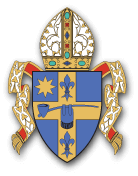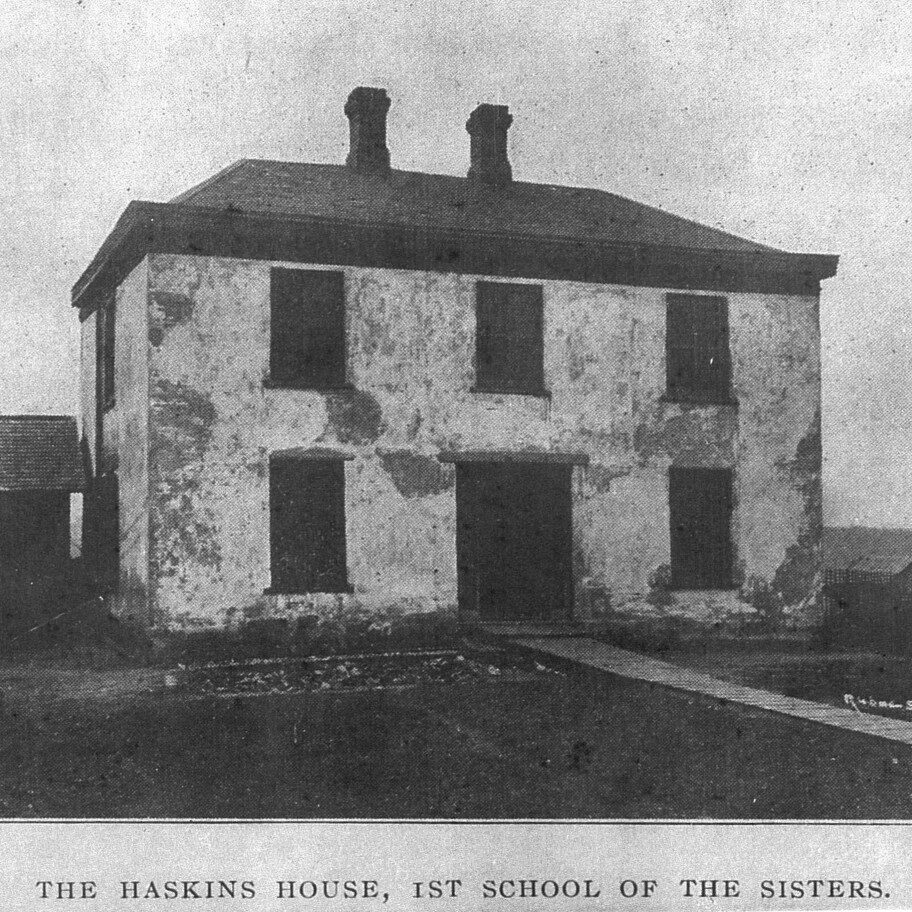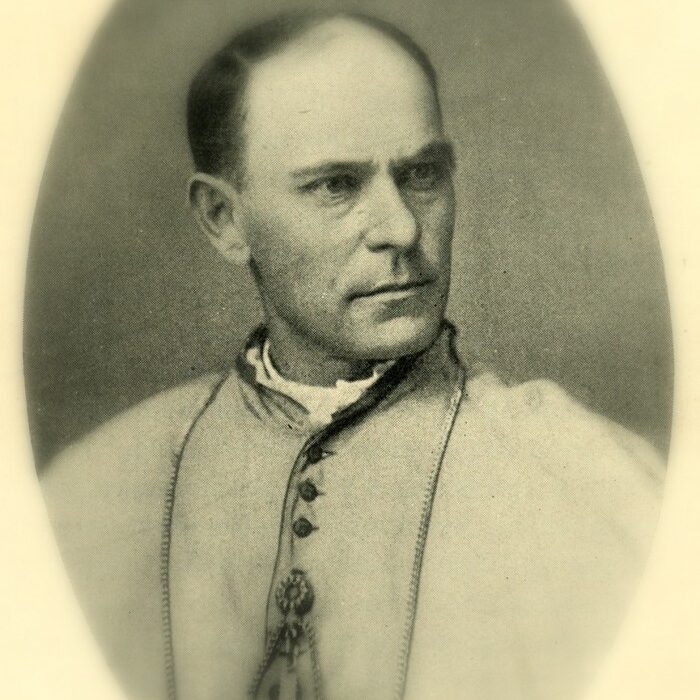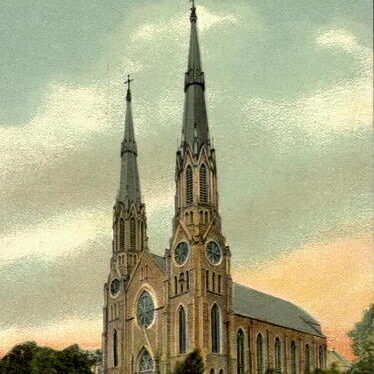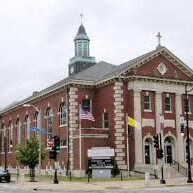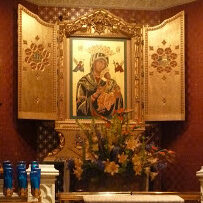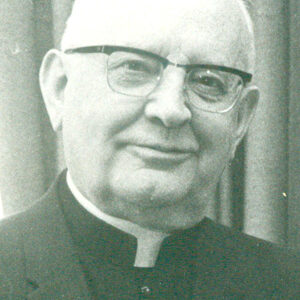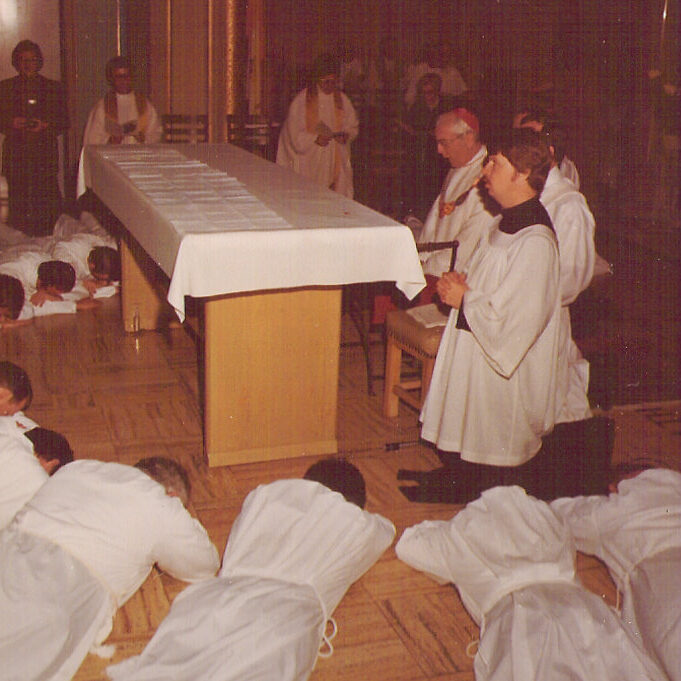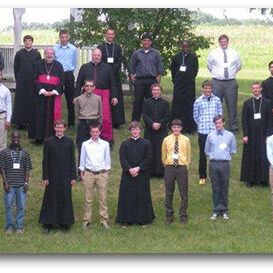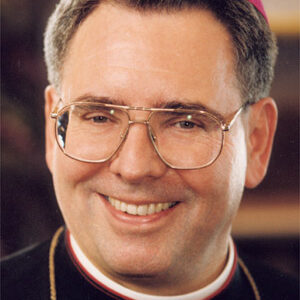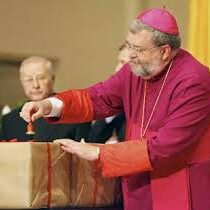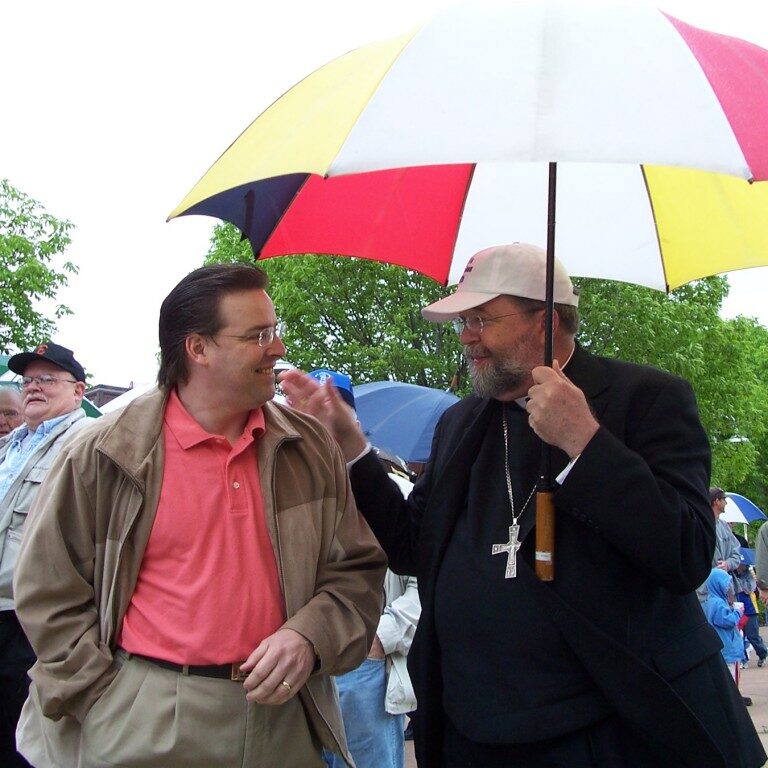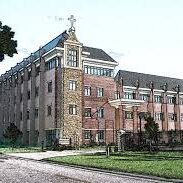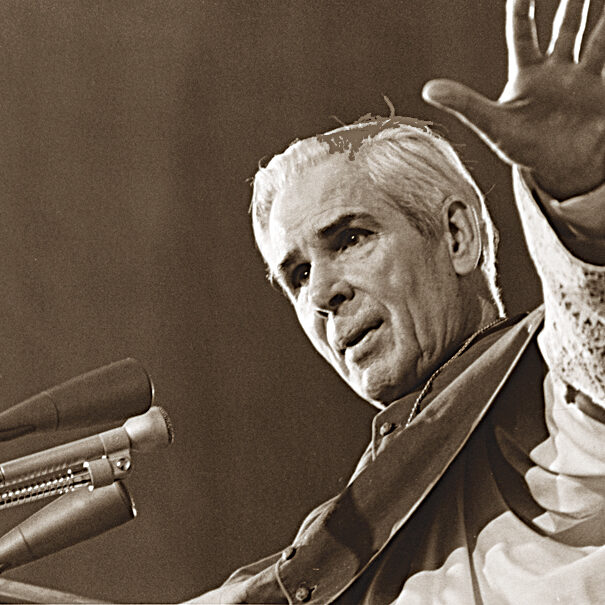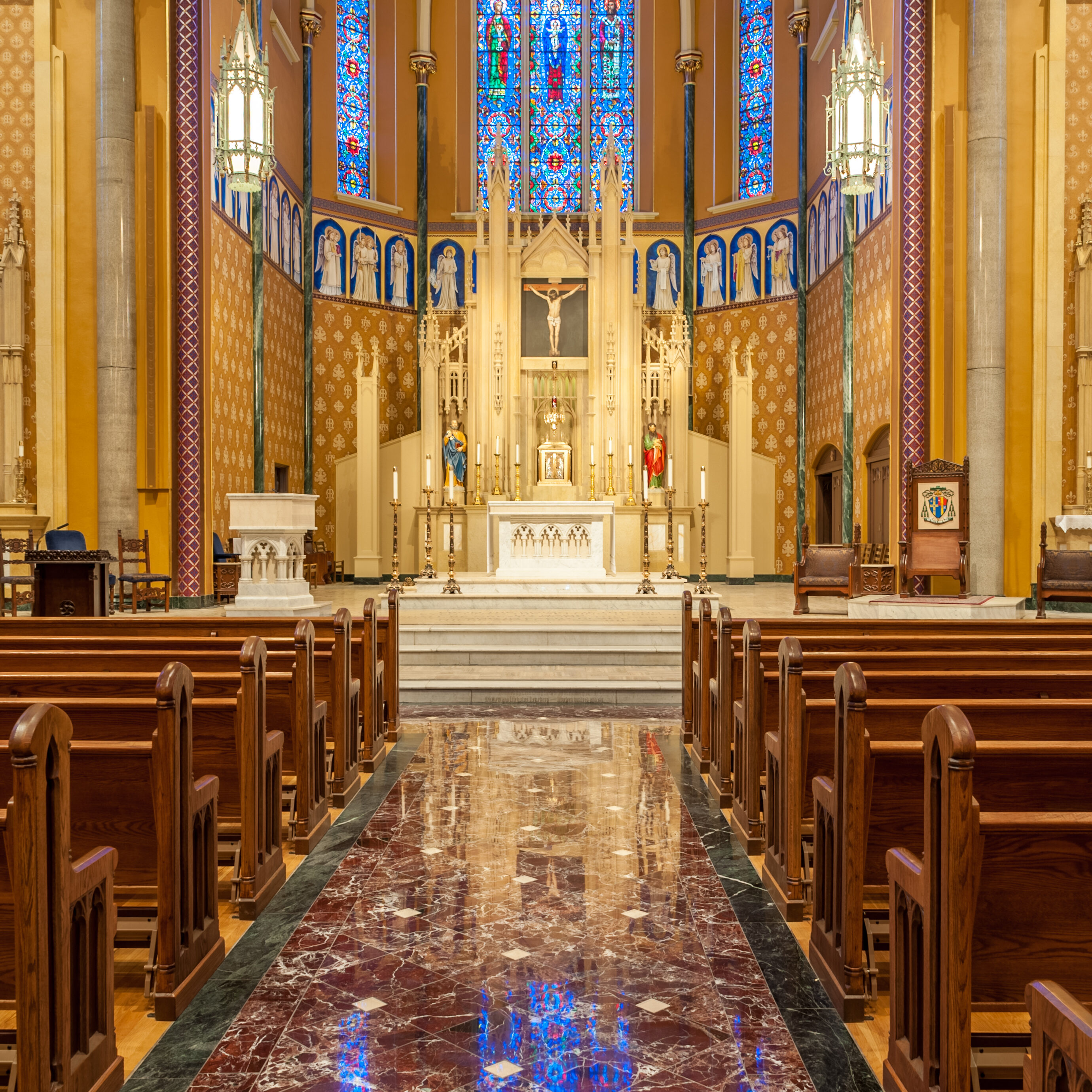Diocesan History
Historical Timeline of the Diocese of Peoria
Click on pictures to enlarge
May 1833
Fr. John Mary Ireneaus St. Cyr, a young priest serving Western Illinois, recommends establishing a church with a resident priest in Peoria: “Peoria is already and will be more so, one of the most important points on the Illinois River for Catholicity, if nothing will be neglected on our part. It is therefore high time to take the matter into consideration; it is now time to plant.”
1909
Edmund M. Dunne, the newly-appointed Bishop of Peoria, drops everything to bring aid and comfort to the suffering at the Cherry Mine disaster night and day, though he carries a broken arm in a sling. A group of priests never leaves the scene, consoling the survivors. Sisters of various languages minister to the poor widows in any way possible.
January 23, 1990
Upon Bishop O’Rourke’s retirement, Bishop Myers became the Seventh Bishop of Peoria. His first pastoral letter about the rights of the unborn draws national media attention, since "there is, and can be, no such thing as an authentic 'pro-choice' Catholic." During his time, the Diocese becomes renowned for its many priestly vocations.
2016
After nearly two years of outside repairs, a historic restoration of the cathedral is completed by the Daprato-Rigali Studios of Chicago. The church once again features deep colors with a new golden dome, starry sky, various murals, renovated altars and much rediscovered beauty of the Mother-church of the diocese and Peoria landmark.
